It’s Time to Ditch Traditional Home Building: Embracing the Shipping Container Revolution
Traditional home construction involves a series of familiar processes and materials: wood frames, bricks, concrete, and extensive labor. It’s a time-tested method that has provided shelter and comfort for generations. However, as we step into an era where sustainability and efficiency are more than just buzzwords, I’ve found that the innovative use of shipping containers in home building is not just a trend but a practical alternative with numerous advantages.
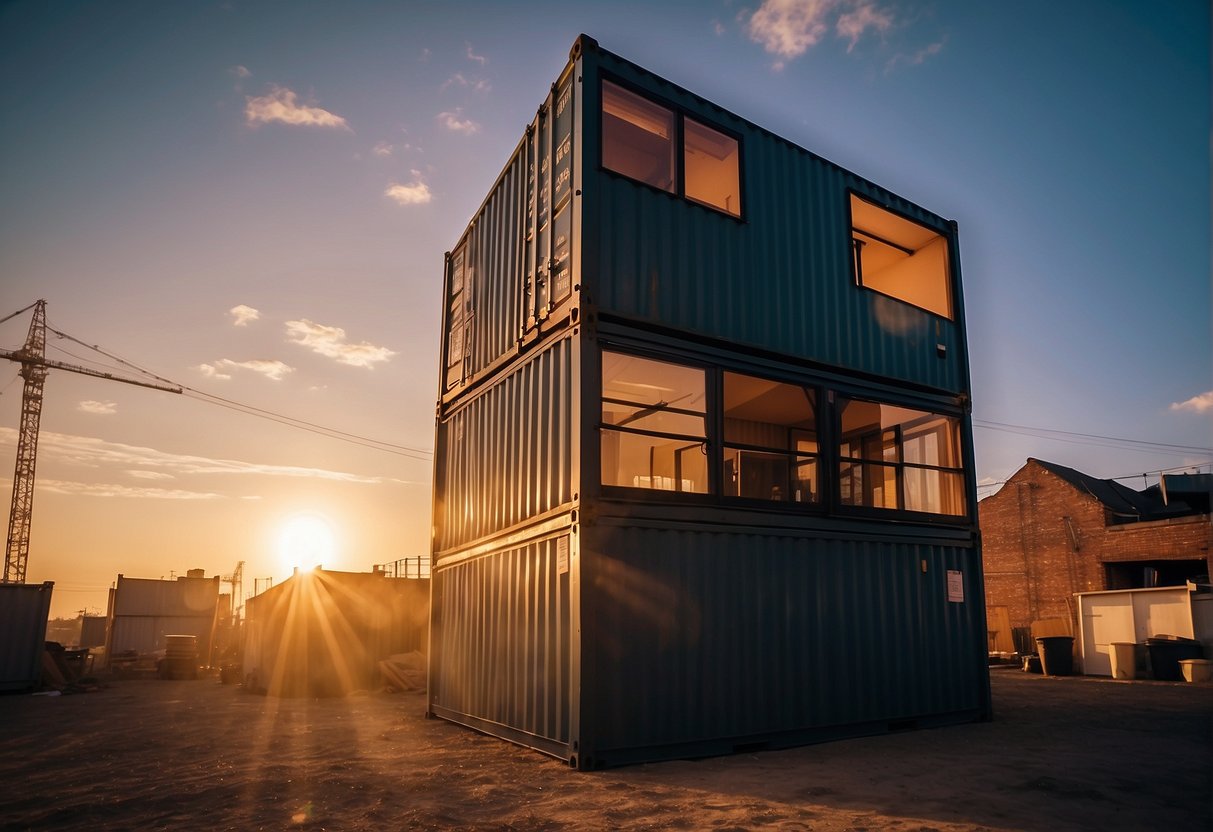
I’ve seen shipping containers transform from their original purpose of transporting goods across the oceans into a viable solution for residential living. With their modular design, they offer a highly flexible and speedy construction process. Compared to sourcing materials for conventional houses, shipping containers are relatively inexpensive and, when recycled, serve as an eco-friendly option by utilizing existing materials.
Embracing this method isn’t merely a statement of eco-consciousness or a nod to minimalistic living. It’s a functional and smart approach that addresses housing needs in a resourceful manner. Working within the constraints of these steel boxes, I’ve discovered a surprising amount of design freedom and the potential for creating comfortable, innovative living spaces that challenge our traditional notions of what a home must be.
Revolutionizing Construction
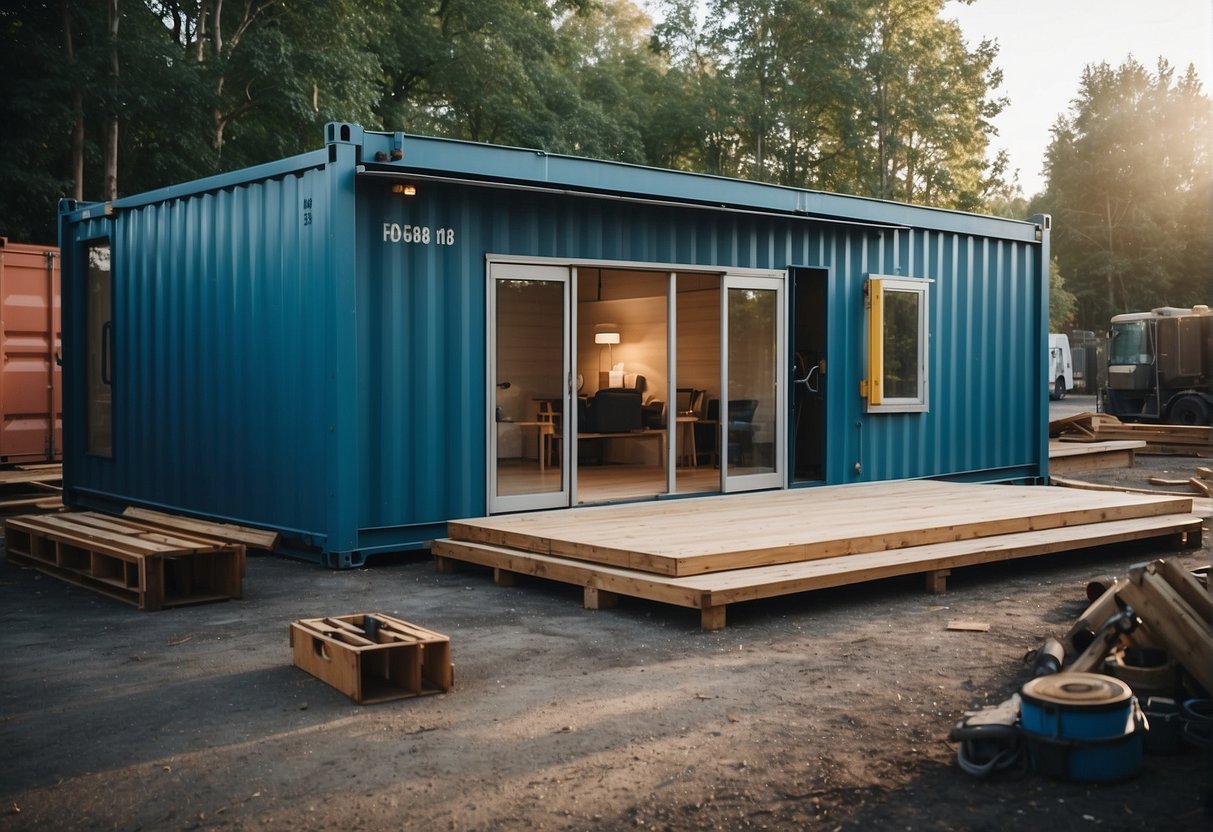
As we move forward, I acknowledge a growing trend in the realm of sustainable living: the innovative use of shipping container homes. This method is not merely a novelty; it’s a response to the critical demand for eco-friendly solutions in the modern world of homebuilding.
Need for Sustainable Living
I understand the urgency for sustainability in our lifestyles. Traditional building methods often result in a considerable carbon footprint, due to the use of exhaustive resources and energy-intensive processes. In light of this, eco-friendly alternatives have become more than a preference—they’re a necessity. Shipping container homes offer an intriguing solution. By repurposing these steel units, I tap into a method that significantly reduces waste and resource consumption.
The Rise of Container Homes
The adoption of container homes has been significant, and I’ve noticed their appeal for several reasons. Primarily, they represent a trend towards innovation in sustainable living. Container homes are not only about reusing materials; they integrate advanced methods like using polyurea coatings for insulation and durability, blending functionality with eco-friendliness. Moreover, they exemplify sustainable architecture, providing me with a tangible method to contribute to environmental conservation while still enjoying modern, stylish living spaces.
Design and Planning
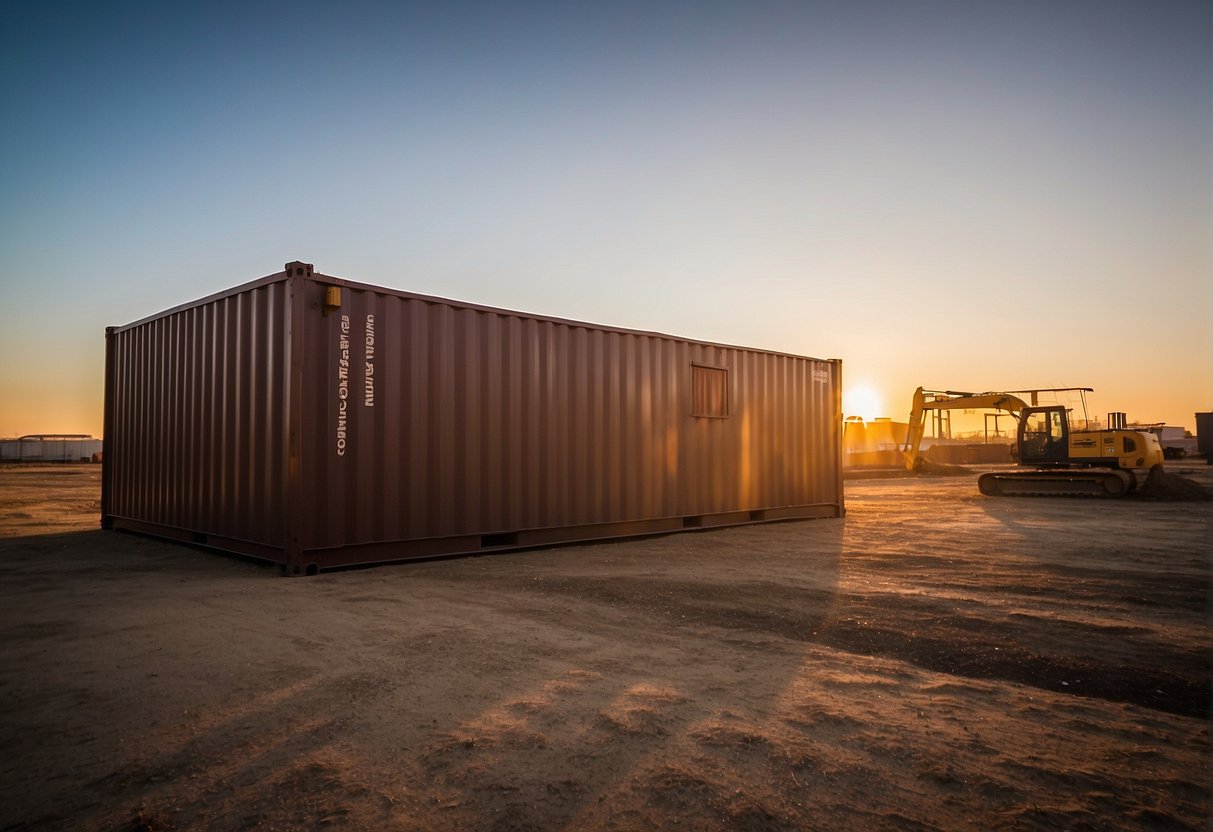
Designing and planning are the cornerstones in converting a shipping container into your dream home. I’ll guide you through customization, efficient layout strategies, and the legalities of zoning and building codes to ensure your container home meets your needs and complies with local regulations.
Customizing Your Container Home
In customizing my container home, choosing the right floor plan is the first step. I look at the available space within a standard high cube shipping container which can range from 160 to 320 square feet. From selecting wall finishes to window placements, I focus on creating a living space that reflects personal style and fulfills functional requirements.
Maximizing Space with Ingenious Design
When planning the design, smart space-saving solutions are essential. I often include built-in furniture and opt for multi-functional pieces. For instance, a bed that folds into a sofa maximizes living space without compromising on comfort. Proper insulation and strategic window placement can make the space feel larger while also increasing energy efficiency.
Navigating Zoning Laws and Building Codes
Planning includes navigating through zoning laws and building codes, which differ from one municipality to another. I ensure the property is suitable for a shipping container home and that my plans are within legal parameters. Consulting with architects with specific experience in shipping container homes can provide insight into creative ways to comply with regulations while achieving design goals.
Advantages of Shipping Container Homes
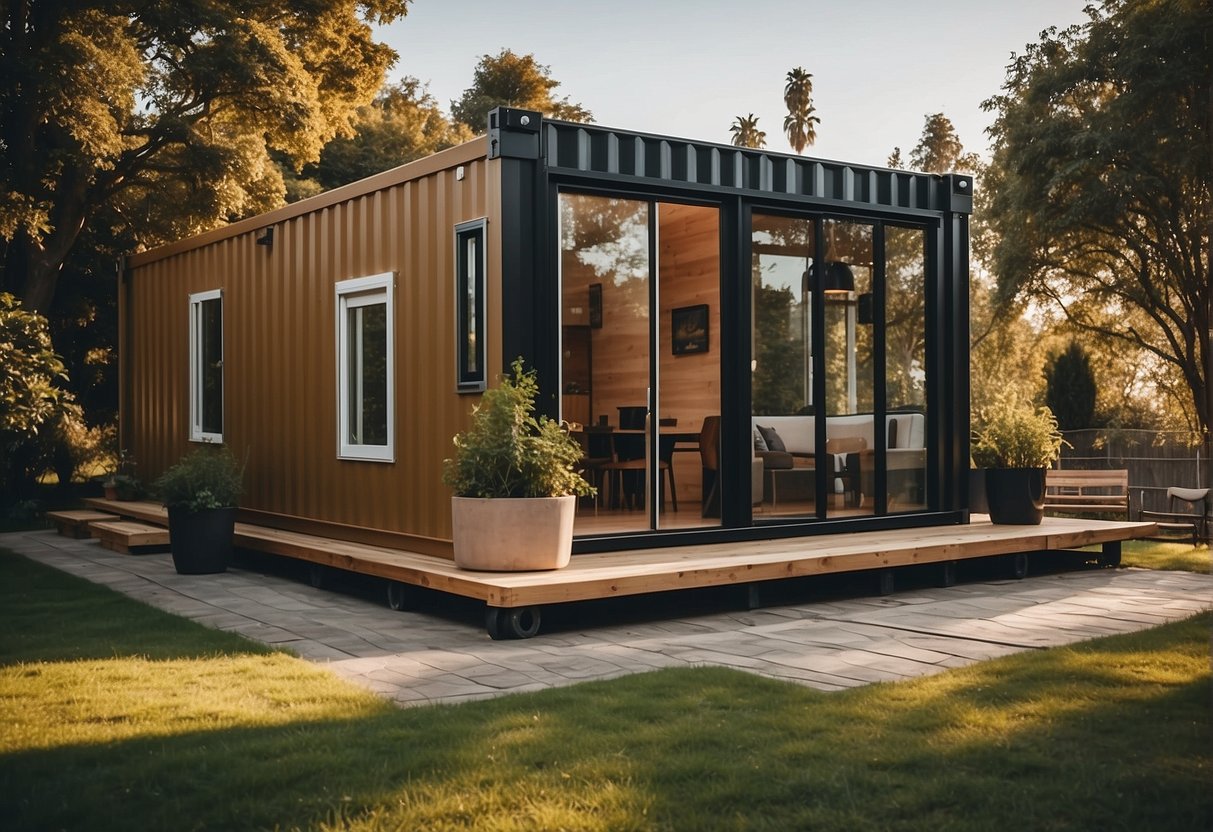
In exploring the benefits of shipping container homes, I’ll focus on their affordability, inherent durability, and eco-friendly attributes.
Affordability and Cost-Effectiveness
Affordability is one of the primary advantages of shipping container homes. By repurposing steel containers, these homes often come at a lower price point in comparison to traditional construction. The use of these structures can lead to significant savings, not just in raw materials but also in the overall cost of construction due to the reduced need for labor and time.
Durability and Weather Resistance
When it comes to durability, shipping containers are designed to withstand harsh conditions at sea, making them inherently weather-resistant and sturdy. This characteristic translates well into home building, where these containers can resist extreme weather conditions, significantly reducing maintenance costs and prolonging the lifespan of the home.
Eco-Friendly Features and Energy Efficiency
Shipping container homes are often celebrated for their sustainability. They repurpose unused containers, which otherwise take up space in ports or landfills. Additionally, these homes promote energy efficiency when combined with insulation and proper design, leading to lower energy consumption for heating and cooling. The sustainability and energy-efficient aspects not only benefit the environment but also offer long-term cost savings for homeowners.
Building Process
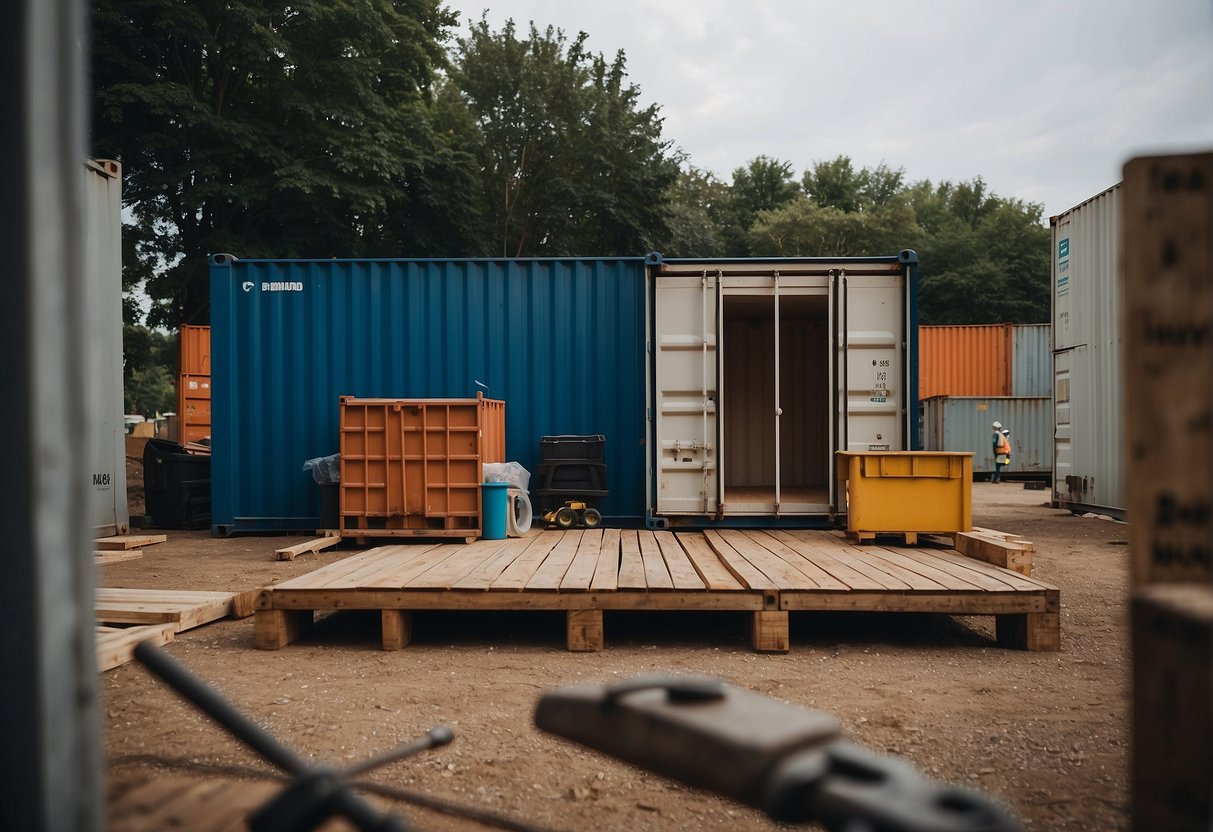
In my exploration of alternative housing, I’ve found that constructing a home from shipping containers streamlines the traditional building process while attending to key aspects such as permits, foundations, and modifications for livability.
Obtaining Permits and Site Preparation
Before laying a single container, I ensure that all building permits are secured to meet local zoning and building codes. This involves collaboration with a structural engineer to certify the plans. As I prepare the site, environmental factors play a pivotal role in planning, from leveling the ground to considering drainage and access for construction.
Foundation and Structural Integrity
The foundation is crucial for shipping container homes to ensure structural integrity. Options vary from simple pier foundations to more complex slab-on-grade, depending on the terrain and design. I engage with professionals to determine the best method, taking extra care that the foundation can support the weight and prevent shifting over time.
Key Requirements: Doors, Windows, Insulation
For a container home to be comfortable, I prioritize the installation of doors and windows, which involves cutting through the steel with precision. Proper insulation is also non-negotiable, as it significantly affects thermal performance and energy efficiency. Options include spray foam, panels, or blanket insulation, each serving the dual purpose of temperature control and condensation prevention.
Logistical Considerations
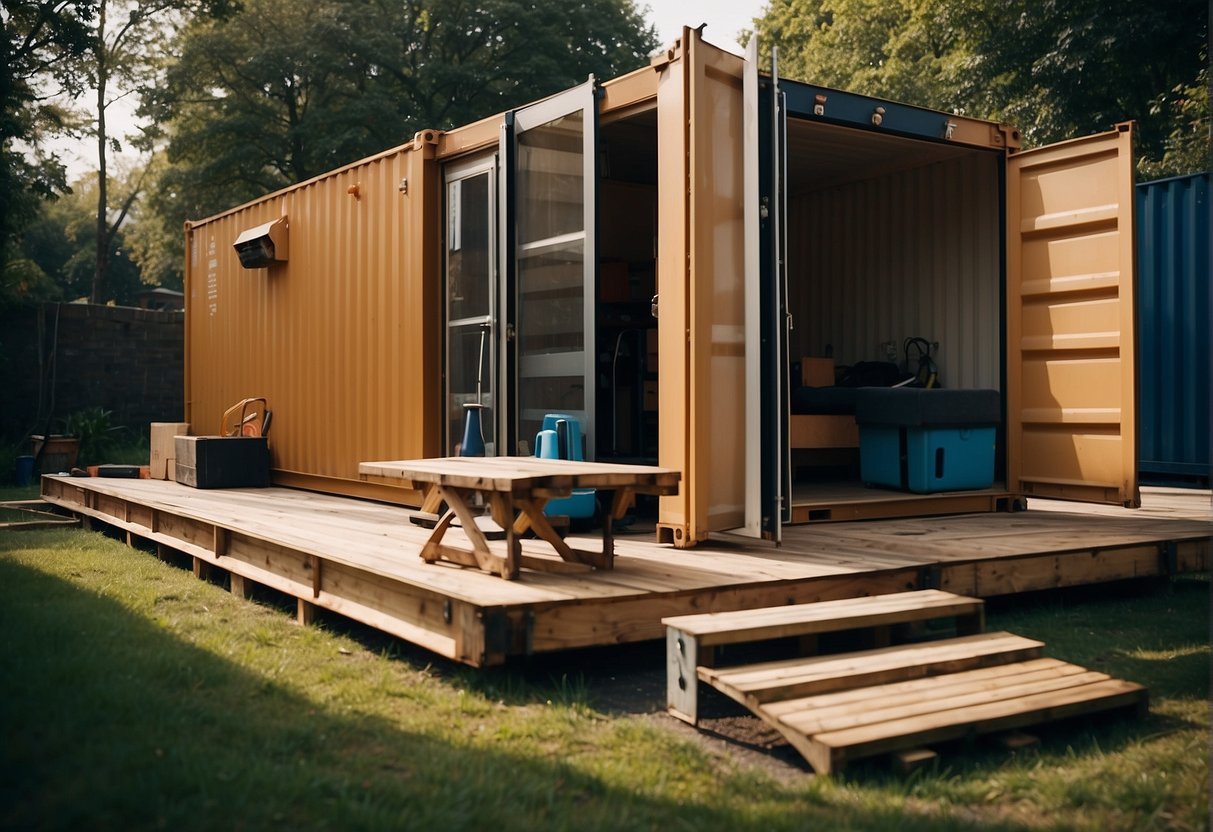
When I’m planning a shipping container home, careful thought goes into logistics. I must consider the feasibility of the location, acquiring the right materials, and ensuring utilities are appropriately addressed.
Location and Accessibility
I choose a location that is both practical and permissible for shipping container construction. My site selection involves analyzing the terrain and accessibility for heavy vehicles. It’s crucial that the containers can be delivered without substantial difficulty or excessive costs. Standard sizes of containers, usually 20 or 40 feet in length, must fit the chosen site without significant obstruction.
Sourcing Containers and Materials
My next step is to secure high-quality shipping containers and building materials. I opt for containers in good condition, often “high cube” options that allow for greater interior height. As for materials, I prioritize sustainable options that are easily sourced to reduce transportation footprint. It’s critical to factor in both quality and logistics involved in material delivery before building a shipping container home.
Dealing with Utilities: Water, Electricity, Ventilation
Each utility is an essential part of making my shipping container home livable:
- Water: I ensure the location has access to a water supply and that plumbing can be installed in alignment with local building codes.
- Electricity: My electrical plan is comprehensive, taking into account the unique aspects of a shipping container home, and includes a balance of efficiency and safety.
- Ventilation: Proper ventilation is planned meticulously, as shipping containers are designed to be airtight. Incorporating windows, HVAC systems, and possibly green technology helps maintain air quality and temperature control inside the home.
Ensuring utility connections are planned and executed correctly is paramount for the functionality of the home, given that these containers are not initially designed for habitation.
The Cost Factor
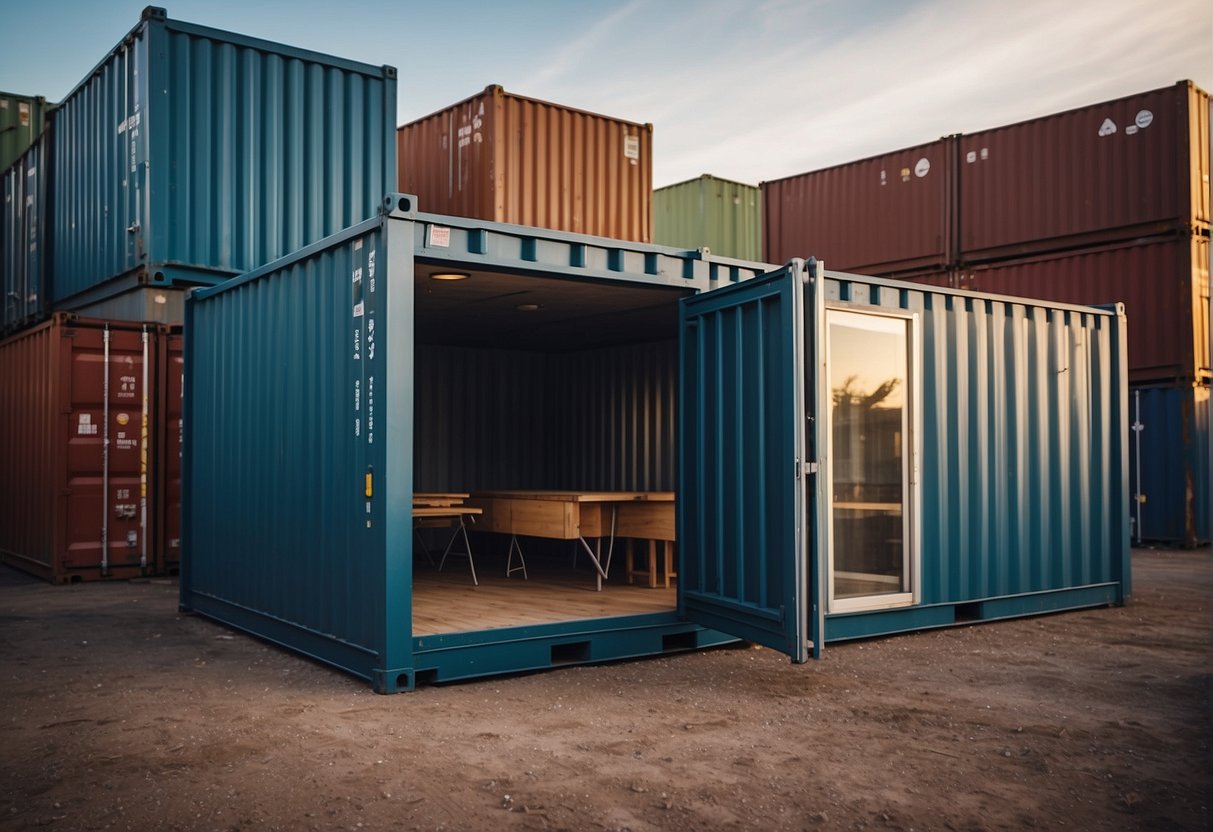
When it comes to choosing a home, budget is often the deal-breaker. I’ve taken a deep dive into the costs associated with shipping container homes to shed light on their financial viability as an alternative to traditional housing.
Estimating Shipping Container Home Costs
Average construction costs for shipping container homes typically range from $150 to $350 per square foot, influenced by size and added features. According to an in-depth analysis for budget planning, purchasing containers is just the beginning. A 20-foot container can set you back roughly $3,000 to $5,000, with the overall price varying based on its condition.
- Standard Container Sizes & Costs:
- 10-foot: Lower cost but limited space
- 20-foot: Mid-range, most common choice
- 40-foot: Higher cost due to size, greater design flexibility
The total cost melds the price of the containers themselves with the expense of site preparation, insulation, interior finishes, and utilities installation.
Budgeting for Construction and Maintenance
A crucial aspect of building a container home is setting a realistic budget. The upfront cost, including the container purchase, land, and conversion for residential use, starts from around $10,000 excluding land cost—often one-third the price of a traditional house. Learn more about the initial cost to build a shipping container home here.
Maintenance should also be factored into the budget. Due to the durable nature of shipping containers, maintenance costs can be significantly lower compared to traditional homes. This can contribute to long-term cost savings, though it’s vital to account for:
- Climate-specific modifications: Insulation for extreme temperatures
- Rust prevention: Essential for preserving structural integrity
- Building code compliance: Can affect construction and renovation costs
While the initial outlay may appear steep, I’ve observed that ongoing maintenance for container homes often presents opportunities for cost savings over time.
Potential Challenges
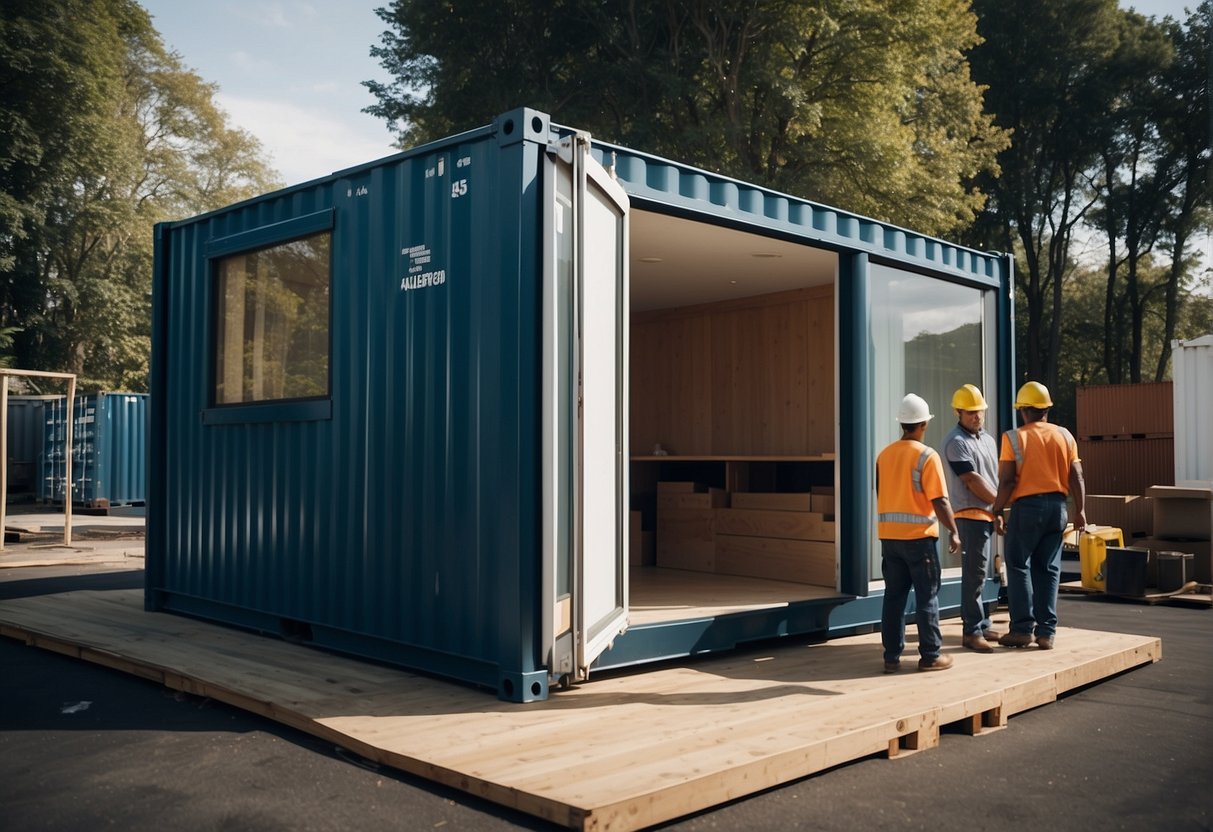
Adopting shipping container homes is not without its hurdles. I’ll explore common issues such as regulatory compliance and structural modification alongside strategies for maintaining environmental consciousness and occupant comfort.
Overcoming Common Obstacles
My experience suggests that understanding and navigating zoning and permitting restrictions are foundational to the success of a container home project. Regulations can vary widely by location, and it’s essential to be well-informed about the specific requirements of your area. Furthermore, addressing the structural integrity of containers is crucial, especially when cutting openings for windows or doors. Insulation is another critical aspect to ensure temperature control since metal containers are prone to extreme temperatures.
To illustrate these points:
- Regulatory Compliance: Ensure you meet all local building codes and obtain necessary permits.
- Structural Modifications: Consult with an engineer when making alterations to maintain the structural integrity.
- Insulation and Climate Control: Invest in high-quality insulation to regulate temperatures effectively.
Mitigating Environmental Impact and Maintaining Comfort
As I turn my attention to sustainability, it’s apparent that container homes can have both positive and negative environmental impacts. On one hand, reusing containers as building materials is resourceful, but on the other, concerns about the materials used and the manufacturing process could detract from these benefits.
For maintaining comfort in a shipping container home, here’s what my experience and research suggest:
- Choose eco-friendly insulation materials that also deliver superior thermal performance.
- Design with both the local climate and the container’s inherent properties in mind to achieve a comfortable indoor environment.
Acoustic Considerations in shipping container homes can be challenging due to the inherent properties of steel. Thoughtful design and proper insulation can help mitigate noise issues, contributing to a more comfortable living space.
In summary, with informed planning and smart design decisions, it is possible to overcome the potential challenges and enjoy the unique benefits of a shipping container home.
Interior and Exterior Finishing
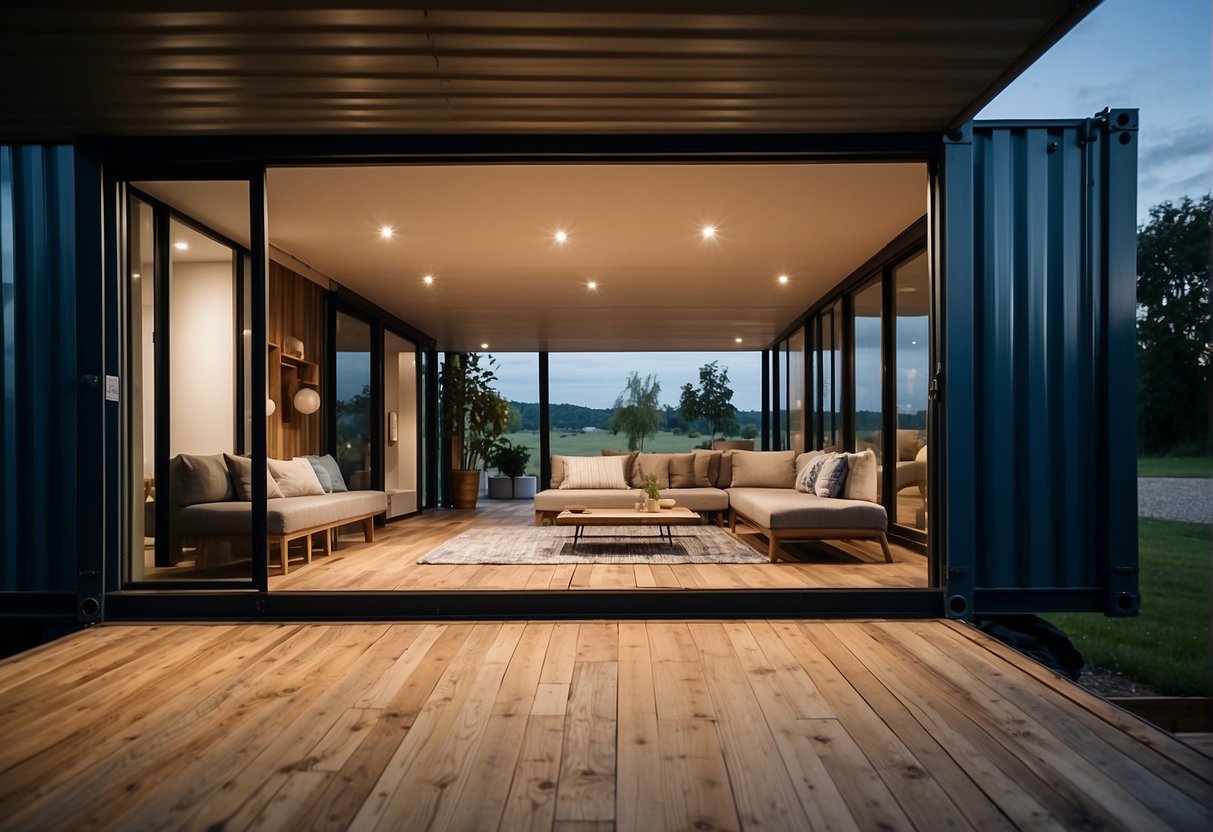
When I approach the finishing of a shipping container home, both inside and out, I focus on striking a balance between aesthetics and functionality, while also embedding eco-friendly features that adhere to modern sustainability standards.
Achieving Aesthetic and Functional Balance
For the interior, selecting the right finishes and fixtures is paramount. I prefer a mix of high-quality wood for flooring and metal or recycled materials for fixtures to maintain a modern look that resonates with the container’s industrial origin. Functionality is not set aside; durable finishes ensure that the charm does not diminish with day-to-day usage. Externally, my preference leans towards low-maintenance yet visually appealing options, such as cladding with reclaimed timber or using pre-weathered materials that blend naturally with the surroundings and improve with age.
Adding Eco-Friendly Features and Utilities
The integration of solar panels on the roof of a container home is among my top recommendations. This investment not only taps into renewable energy but also cuts down on electricity bills significantly. Inside, I prioritize eco-friendly features like LED lighting, low-flow water fixtures, and high-quality insulation. These not only help in reducing the environmental footprint but also offer long-term cost-efficiency. For a full embrace of sustainability, coupling these features with green building certifications can elevate the property’s value and impact.
Living in a Container Home
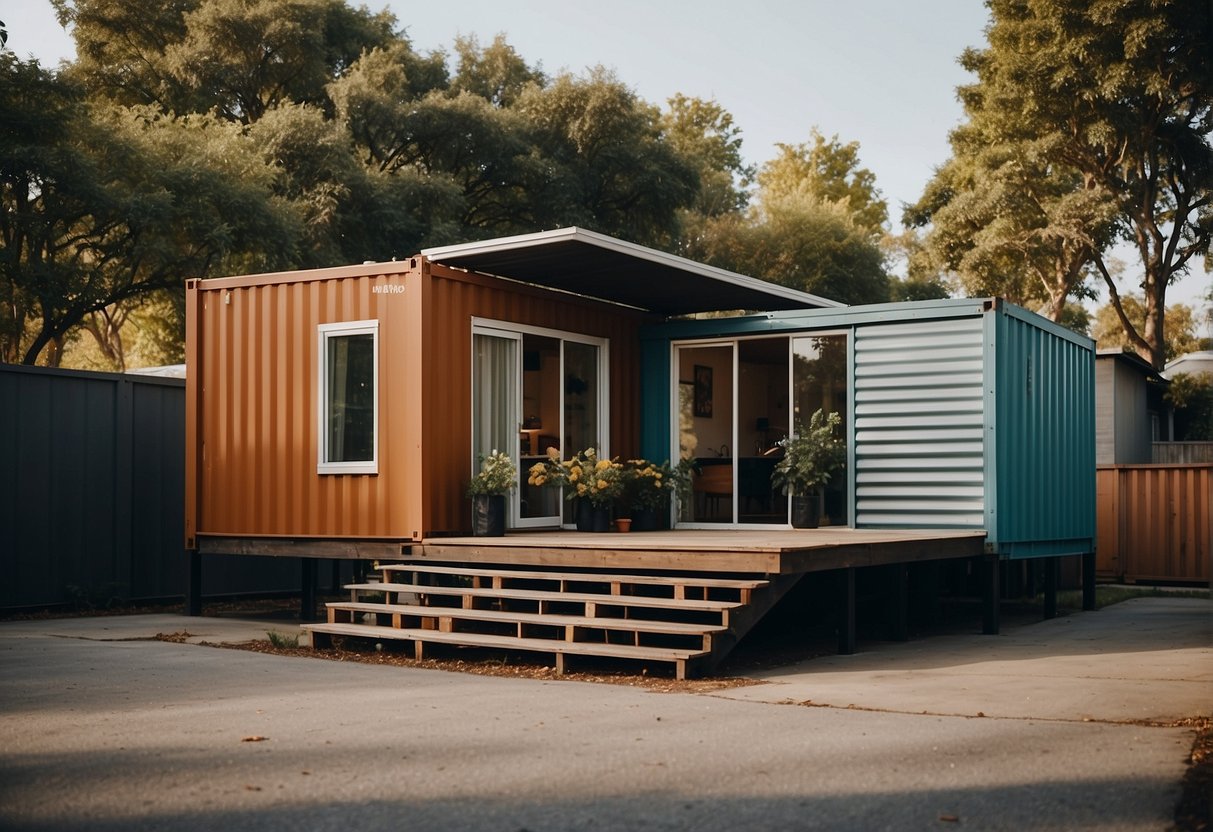
In embracing the container home, I find that attention to design details, particularly in maximizing natural light and effective climate control, leads to a comfortable and sustainable living space.
Maximizing Natural Light and Climate Control
My container home is oriented to capture maximum natural light. Large windows and strategically placed skylights ensure that during the day, every corner of my living room and kitchen is bathed in sunlight, reducing the need for artificial lighting. For climate control, insulation plays a crucial role. I use spray foam insulation which adapts to the container’s corrugated walls, providing excellent thermal resistance. In the summer, reflective paint on the exterior minimizes heat absorption, keeping the cooling costs down.
Containers in Community and Urban Development
In urban settings, I see the integration of container homes as a part of community development. These homes can be stacked and connected, creating multi-unit residences that utilize limited space effectively. Each container acts as a modular living space—be it a kitchen, bathroom, or bedroom—forming a cohesive unit with a shared living room. This approach promotes community living while retaining individual privacy, and it’s a sustainable method to address urban housing challenges.
Beyond the Home: Expanded Uses
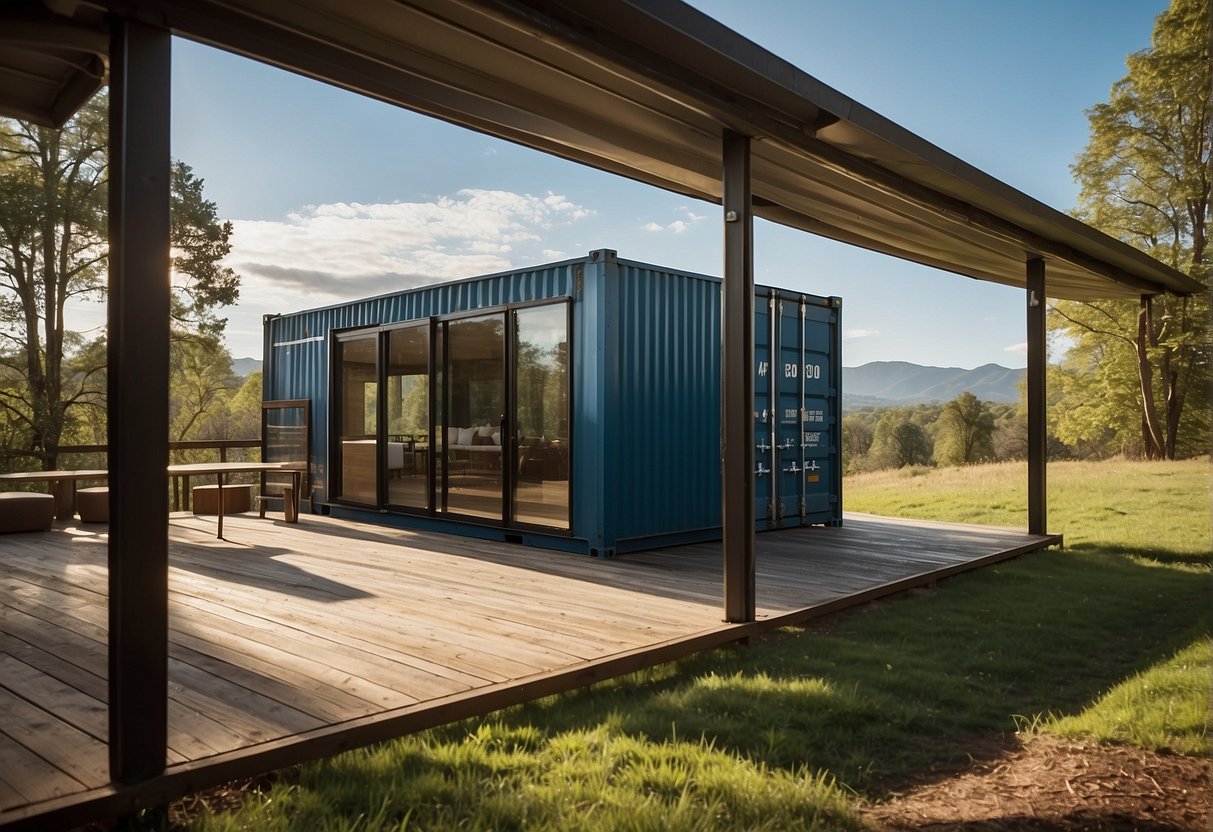
When it comes to alternative housing solutions, shipping containers offer versatility beyond the typical family residence. I’ve seen their adaptability extend into the realm of secondary housing options like cabins and tiny homes, as well as a variety of commercial and customized spaces.
Container Homes as Cabins and Tiny Homes
I’ve observed a growing interest in using shipping containers as cabins and tiny homes across the U.S. It’s no wonder, given their inherent strength, durability, and ease of modification. For those seeking an affordable housing solution, a container cabin tucked away in a serene forest can serve as an escapade or a minimalist abode. For instance, I came across a shipping container turned into a rustic retreat providing all the necessary comforts within a compact footprint.
Moreover, the small-scale luxury of a tiny home fashioned from shipping containers speaks of efficiency. The cost-effectiveness of this approach denotes a path towards sustainability and affordability. With a reduced square footage, the appeal lies in the simplicity and the reduced environmental impact.
Exploring Commercial and Custom Applications
Beyond residential uses, I’ve seen shipping containers transformed into compelling commercial spaces. Restaurants, pop-up shops, and even multi-story office buildings are just the tip of the iceberg. Their modular nature allows for creative commercial endeavors that stand out due to their industrial aesthetic and modern appeal.
Custom applications are particularly intriguing. From container-based art studios to innovative community centers, these steel boxes can be repurposed into almost any structure imaginable. The agility of shipping containers in the realm of customization is unmatched, offering a canvas for entrepreneurs and designers to execute their visionary concepts.
Future of Container Homes
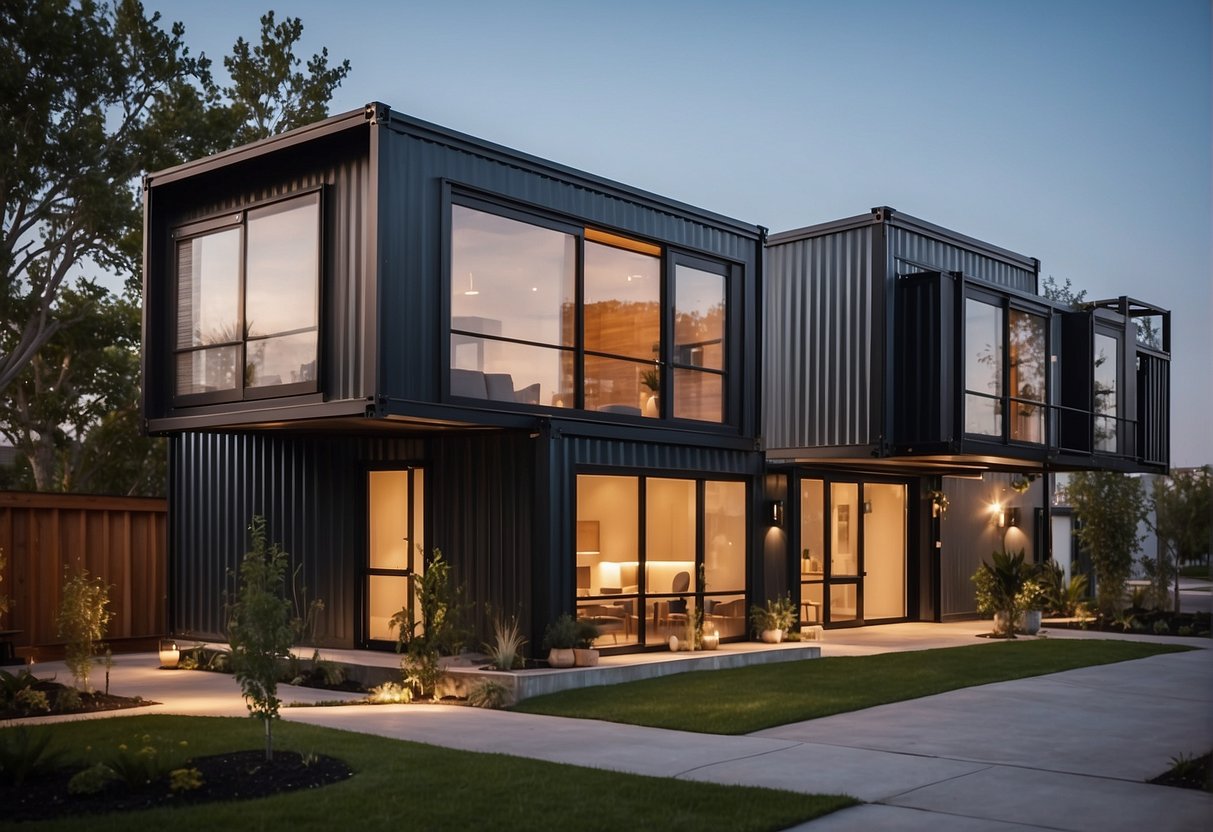
Container homes are swiftly becoming a significant part of the housing market, with their value and acceptance anticipated to grow. Advancements in building regulations and market trends are shaping the future of these innovative dwellings.
Market Trends and Resale Value
I’m observing a steady increase in the demand for container homes, which directly influences their resale value. The market is recognizing these homes for their efficiency and sustainability, driving up their attractiveness to environmentally conscious buyers. According to recent data, the container house market is poised to expand significantly, reaching a valuation of $62.73 billion by the end of 2023. The appreciation rates for container homes are also promising, particularly as younger buyers enter the market seeking affordable and eco-friendly housing options.
Regulatory Developments and Industry Standards
When it comes to regulations, I’m noting an evolution in building codes that are beginning to better accommodate container housing. This includes streamlining building permits for modular and non-traditional structures, which benefits the growth of the container home industry. As regulators adjust to this trend, the industry is also establishing its own standards to ensure quality and safety in the construction and design of container homes. I follow these developments closely, recognizing their critical role in the sustainability and scalability of container-based living spaces.
Case Studies and Success Stories
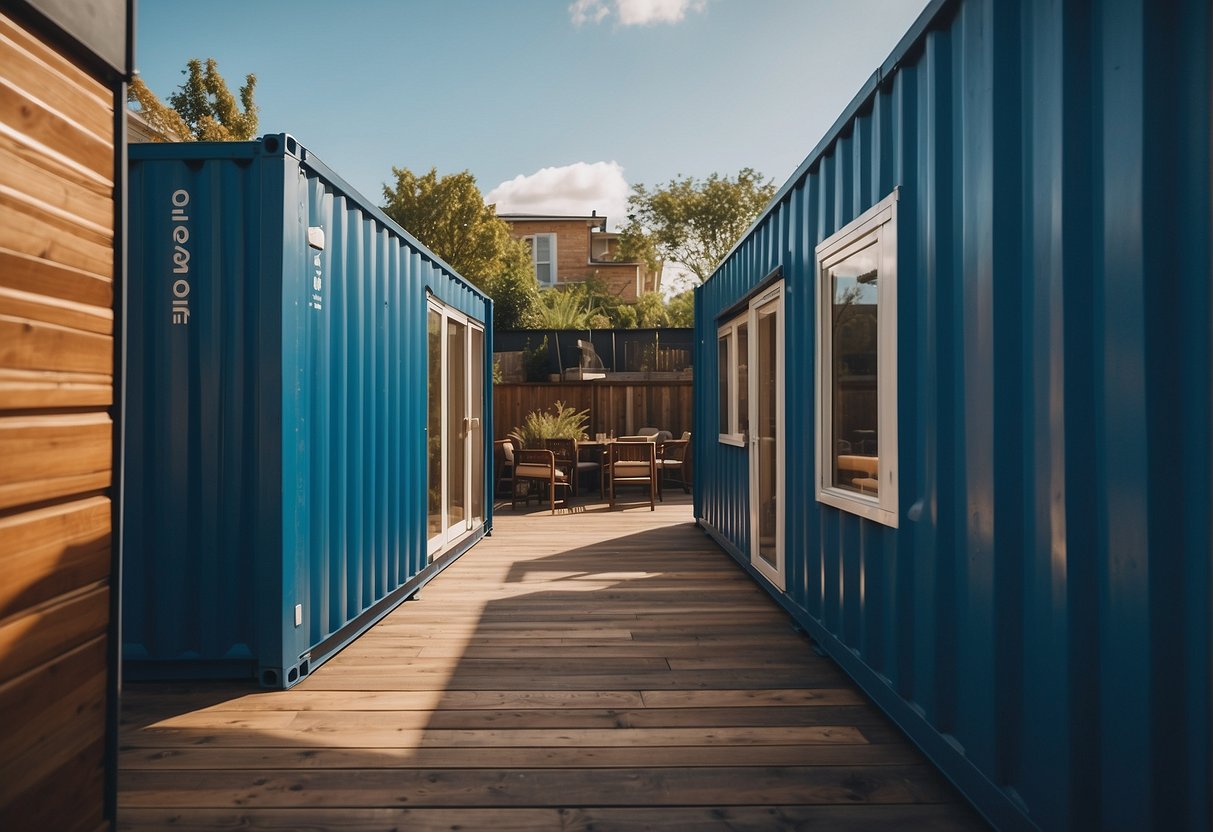
Exploring a variety of case studies and successful ventures shows the practicality and innovative spirit behind shipping container homes. I’ve seen that projects range from DIY undertakings to professionally executed prefab designs, demonstrating both the accessibility and sophistication of this approach to housing.
Innovative Projects and DIY Pioneers
Manifesto House: I came across the Manifesto House, which is a brilliant example of sustainable design realized through shipping containers. I learned that by integrating two 40′ containers with two 20′ containers, the architects crafted a 1700 Sq.Ft. abode. The builders placed a strong emphasis on using sustainable and recycled materials, creating a climate-responsive structure with a two-floor design.
DIY Container Home for Under $10K: For those with a knack for DIY, the idea that a DIY container home can be constructed for under $10,000 is profoundly inspiring. It’s evident that even with a single 40-foot container, one can create a functional and cost-effective living space, proving the accessibility of the shipping container home.
Prefab Container Home: When exploring prefab options, my attention was caught by the concept that shipping container homes can also be executed with a high degree of precision and expediency. For example, in a study focusing on prefab shipping container homes as housing solutions, it was determined that this method is efficient and can serve as safe and affordable housing, especially in the context of natural disaster relief.
By considering these innovative projects and DIY pioneers, the potential benefits of shipping container homes become clear. Affordability, sustainability, and the opportunity for personalization make them an attractive option for a variety of housing needs.
Conclusion
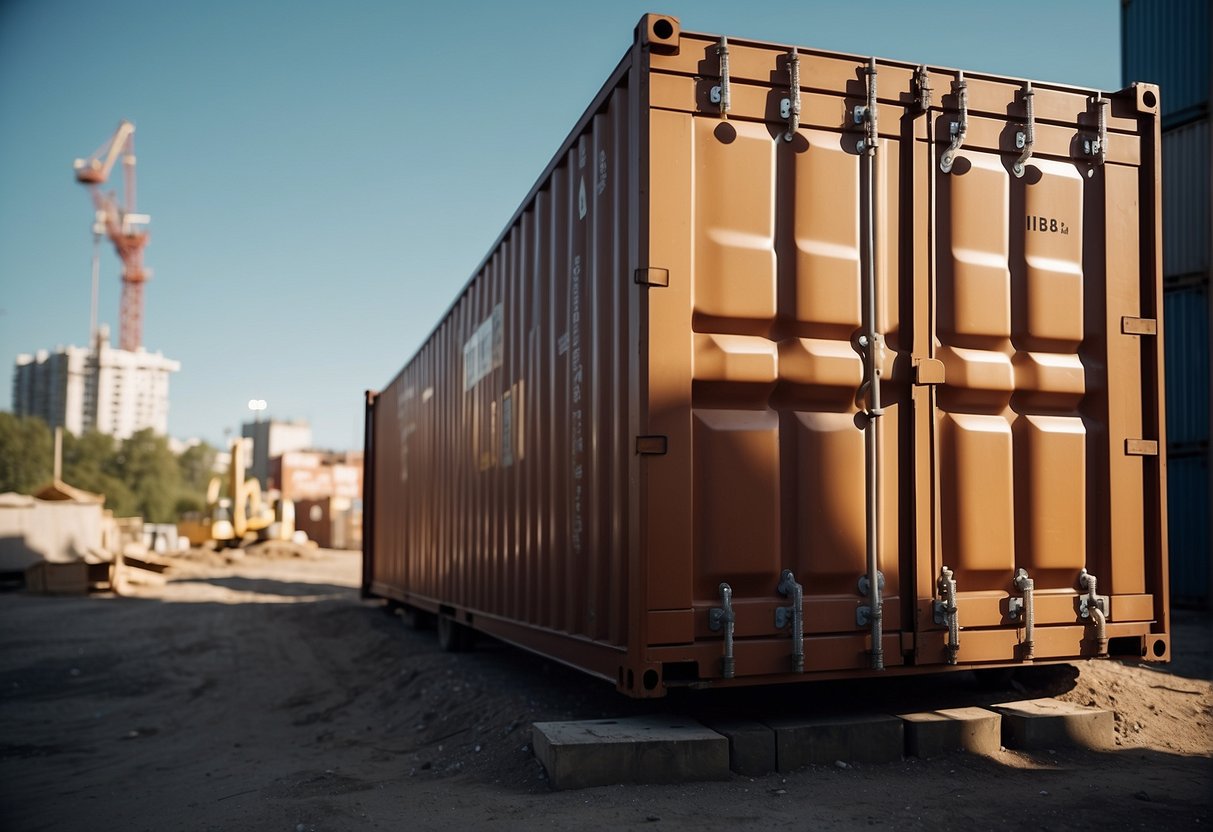
I’ve examined the benefits and potential cost savings associated with choosing a shipping container home over a traditional house. Shipping containers offer a unique blend of sustainability, affordability, and flexibility that I find compelling, especially in light of the growing environmental concerns and the rising costs of homeownership.
The adaptability of shipping containers allows for creative designs, as evidenced by the various projects, including a 2,600-foot colorful home. Their starting costs can be as low as $1,500, providing a more approachable entry point into homeownership for many.
I recognize that the decision to opt for a shipping container home is not purely about cost—it’s also a lifestyle choice that emphasizes minimalism and a lower carbon footprint. By repurposing existing materials, these homes can be viewed as a testament to eco-friendly living. Moreover, understanding the myriad of design possibilities places emphasis on innovation in the space of affordable housing.
With the container house market anticipated to expand substantially, this alternative form of housing is not just a fleeting trend. It represents a meaningful shift towards efficient and responsible building practices. As I conclude, my confidence in the viability of shipping container homes as a genuine alternative to traditional building remains high. It is a worthy consideration for future homeowners who value affordability, sustainability, and design flexibility.
